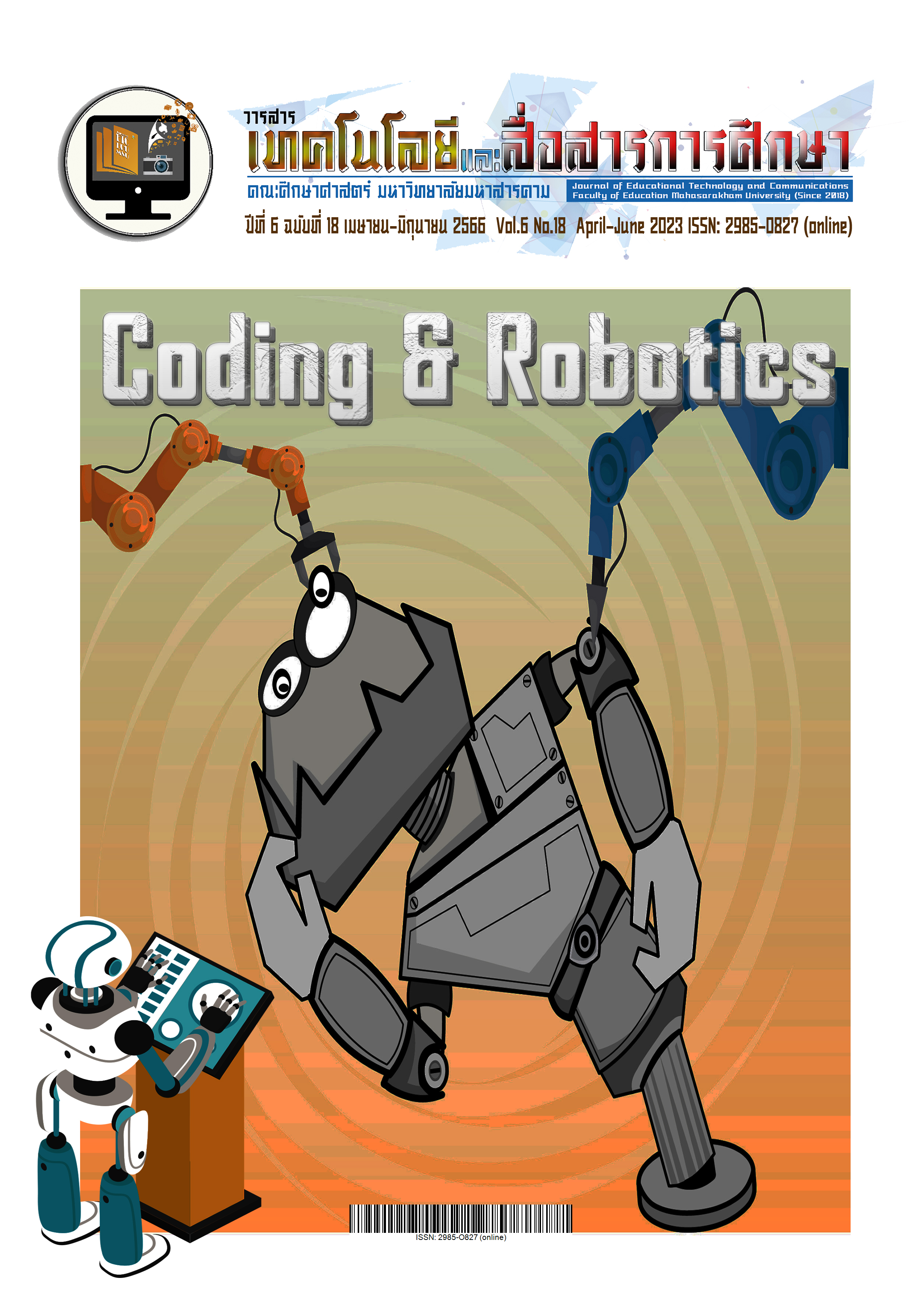Factors Influence on E-Learning Success
Main Article Content
Abstract
Electronic learning (E-learning) is an education by used technology as tools and mediator which is currently widespread used. In addition, the university curriculum trends are toward more online course in the future. To using the effective e-learning tools, this research study the factors which influence on e-learning success. The objectives are 1) to explore samples perception about factors and e-learning success, then 2) to investigate influence of factors on e-learning success. Samples are undergraduate students which studying by application software on internet in the academic years 2020-2021. Questionnaire is employed to collect data. 501 questionnaires were completed by students. Response rate is 82.40%. Data analysis was made by descriptive statistics–percentage, mean and inferential statistic – multiple regression analysis. The results indicate that the perception of respondents about the quality of instructor characteristics is at the highest level. The quality of application software in learning support and technical features and the quality of learner characteristics are at high level. As well as, e-learning success is at high level. Moreover, the findings are that 4 factors including (1) technical features of application software (2) learning support of application software (3) learner characteristics and (4) instructor characteristics have a positive influence on e-learning success (p =.001, p<.001, p<.001, p<.001, respectively). Furthermore, the results show that learning support of application software (=.255) is more effect on e-learning success than technique of application software (=.143), learner characteristics (
=.151) and instructor characteristics (
=.167).
Downloads
Article Details
References
กัลยา วานิชย์บัญชา. (2553). การวิเคราะห์สถิติ: สถิติสำหรับการบริหารและวิจัย (พิมพ์ครั้งที่ 12). โรงพิมพ์แห่ง จุฬาลงกรณ์มหาวิทยาลัย.
ทิศากร ศิริพันธุ์เมือง. (2564). สภาพและปัญหาการเรียนออนไลน์ของนักศึกษามหาวิทยาลัยราชัฏสกลนคร ในสถานการณ์การแพร่ระบาดของโควิด-19. วารสารวิชาการหลักสูตรและการสอน มรภ.สกลนคร, 13(38), 131-140. https://jci.snru.ac.th/ArticleView?ArticleID=947
ปวีณา ลิมปิทีปราการ, นิยม จันทร์นวล, ฐิติมา แสนเรือง และกาญจนา แปงจิตต์. (2565). ทัศนคติต่อการจัดการเรียนการสอนออนไลน์ของนักศึกษามหาวิทยาลัยอุบลราชธานี. วารสารเทคโนโลยีและสื่อสารการศึกษา คณะศึกษาศาสตร์ มหาวิทยาลัยมหาสารคาม, 5(14), 176-187. https://so02.tci-thaijo.org/index.php/etcedumsujournal/article/view/254347
สำนักงานคณะกรรมการการอุดมศึกษา. (2561). แผนอุดมศึกษาระยะยาว 20 ปี พ.ศ. 2561–2580. พริกหวานกราฟฟิค.
Alhabeeb, A. and Rowley, J. (2018). E-learning critical success factors: Comparing perspectives from academic staff and students. Computers & Education, 127, 1-12. https://doi.org/10.1016/j.compedu.2018.08.007
Al-Fraihat, D., Joy, M., Masa’deh, R. and Sinclair, J. (2020). Evaluating E-learning systems success: An empirical study. Computers in Human Behavior, 102, 67-86. https://doi.org/10.1016/j.chb.2019.08.004
Aparicio, M., Bacao, F. and Oliveira, T. (2016). Cultural impacts on e-learning systems’ success. Internet and Higher Education, 31, 58-70. https://doi.org/10.1016/j.iheduc.2016.06.003
Aparicio, M., Bacao, F., Oliveira, T. (2017). Grit in the path to e-learning success. Computers in Human Behavior, 66, 388-399. https://doi.org/10.1016/j.chb.2016.10.009
Cooper, D. R., & Schindler, P. S. (2008). Business Research Methods. : McGraw-Hill.
DeLone, W.H., and McLean, E.R. (1992). Information Systems Success: The Quest for the Dependent Variable. Information Systems Research, 3(1), 9-30. https://doi.org/10.1287/isre.3.1.60
Farhan, W., Razmak. J., Demers, S. and Laflamme, S. (2019). E-learning systems versus instructional communication tools: Developing and testing a new e-learning user interface from the perspectives of teachers and students.Technology in Society, 59, 101192. https://doi.org/10.1016/j.techsoc.2019.101192
Hassanzadeh, A., Kanaani, F. and Elahi, S. (2012). A model for measuring e-learning systems success in universities. Expert Systems with Applications, 39(12), 10959–10966. https://doi.org/10.1016/j.eswa.2012.03.028
Hsieh, P. J. and Cho, V. (2011). Comparing e-Learning tools’ success: The case of instructor–student interactive vs. self-paced tools. Computers & Education, 57(3), 2025-2038. https://doi.org/10.1016/j.compedu.2011.05.002
Kutner, M. H., Nachtsheim, C. J. and Neter, J. (2008). Applied Linear Regression Models (4th ed.). :McGrawhill.

